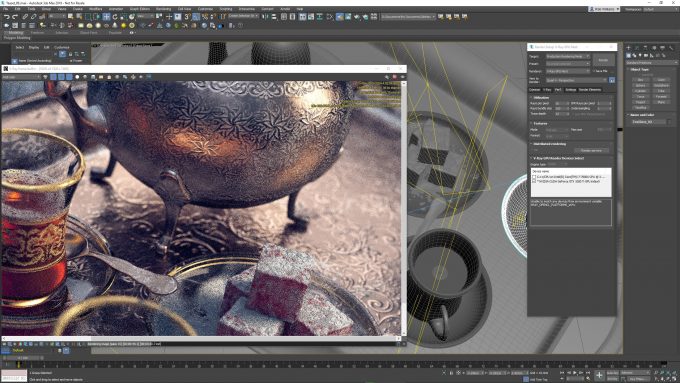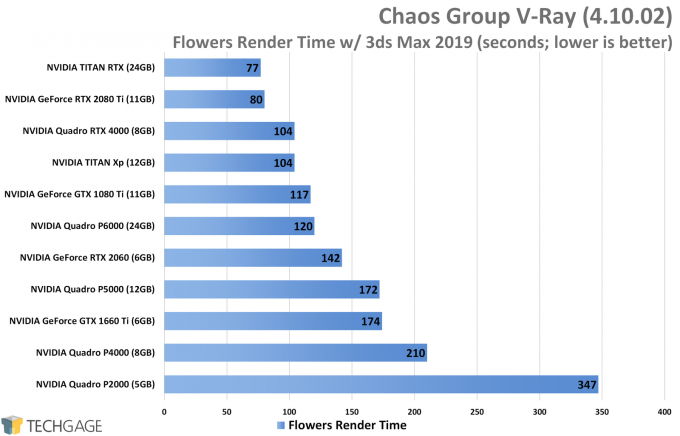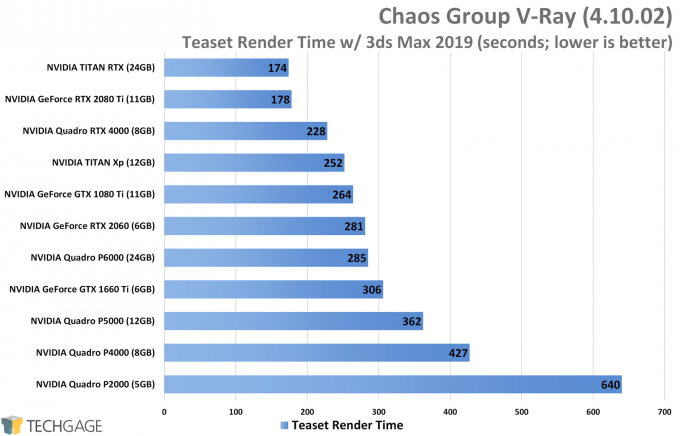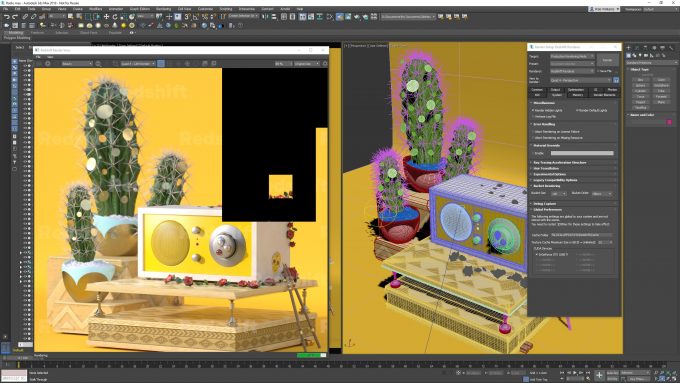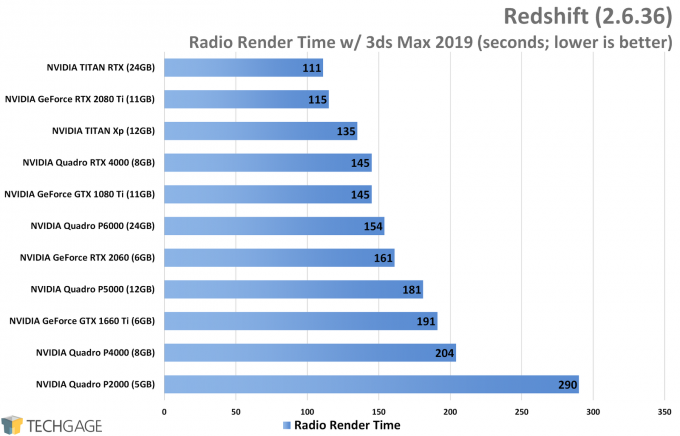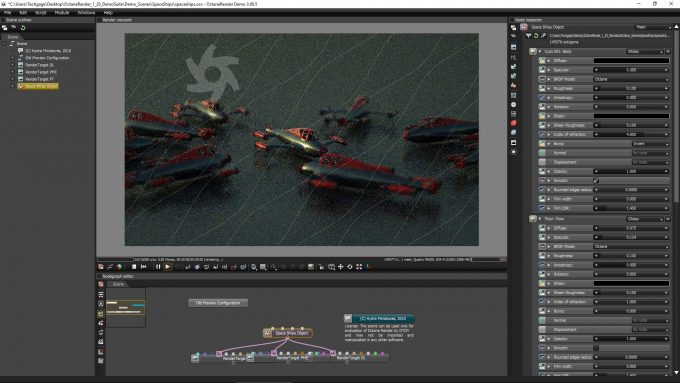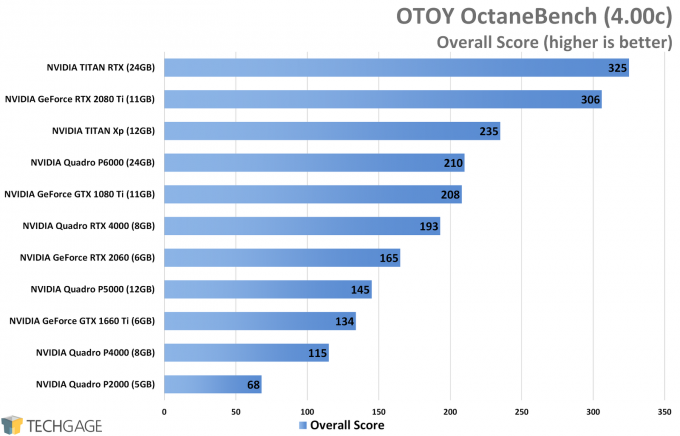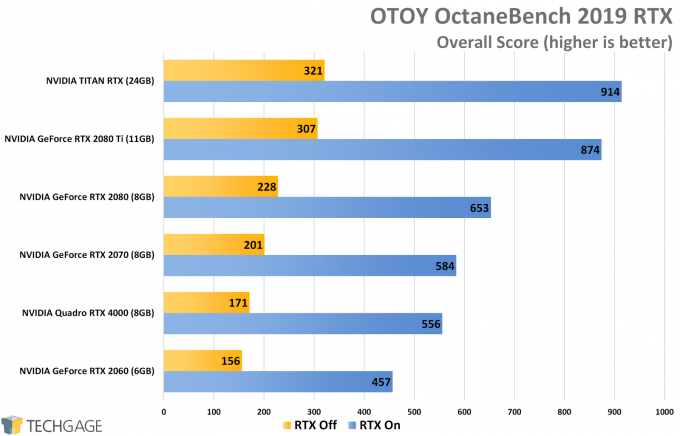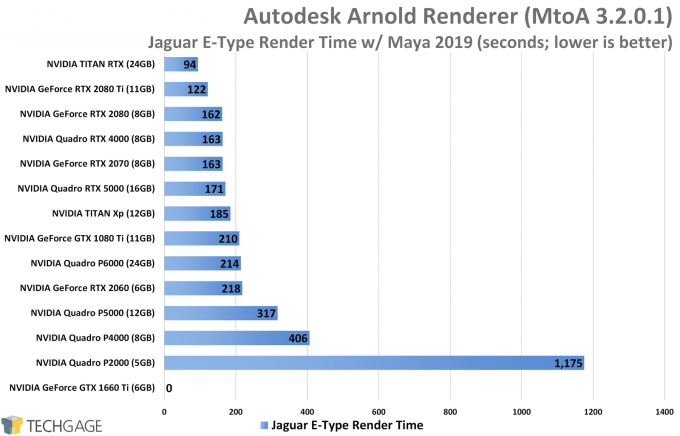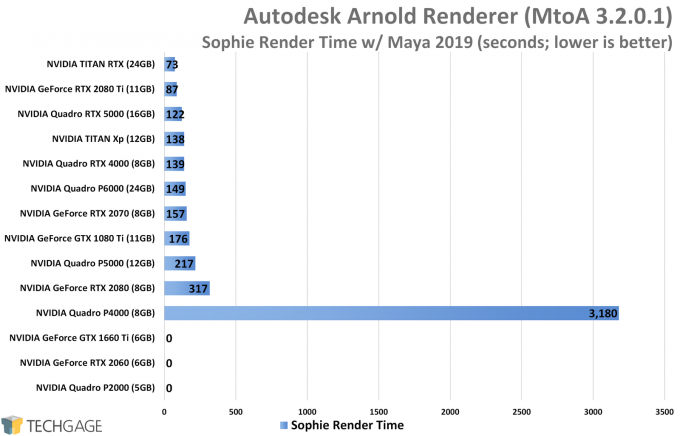- Qualcomm Launches Snapdragon 4 Gen 2 Mobile Platform
- AMD Launches Ryzen PRO 7000 Series Mobile & Desktop Platform
- Intel Launches Sleek Single-Slot Arc Pro A60 Workstation Graphics Card
- NVIDIA Announces Latest Ada Lovelace Additions: GeForce RTX 4060 Ti & RTX 4060
- Maxon Redshift With AMD Radeon GPU Rendering Support Now Available
NVIDIA TITAN RTX Workstation Performance Review

NVIDIA’s TITAN RTX means business – and a lot of it. This jack-of-all-trades graphics card caters to those with serious visual computing needs, whether it be designing and rendering 3D scenes, or poring over repositories of photos or other data with deep-learning work.
Page 2 – Rendering: V-Ray, Redshift, OctaneRender & Arnold GPU
Chaos Group V-Ray
To the surprise of no one, we’re sure, the TITAN RTX has proven dominant in our first rendering test. Notably, it isn’t exactly pulling far ahead of the RTX 2080 Ti, which depending on which GPU you’re gravitating towards most will be a great or bad thing. Regardless of how close the 2080 Ti keeps to the TITAN RTX in performance, though, the 2080 Ti will always fall short of that massive 24GB framebuffer.
Redshift
In Redshift, the TITAN RTX domination continues, leading the pack in every way but the framebuffer (which is matched by the last-gen Quadro P6000). It wasn’t long ago 16GB of memory seemed completely normal for a desktop PC, whereas now, creators are craving that much for just their GPU.
OTOY Octane
Because RTX offers unique ray tracing capabilities, OTOY has so far branched such tests to a separate version of OctaneBench, called OctaneBench RTX. The standard version is seen above, which still puts the TITAN RTX ahead of the pack a fair distance, though one not too wide to the 2080 Ti. The leap over last-gen cards is huge, though. It’s hard to believe we see a test that makes the TITAN Xp look weak, but Turing’s enhancements have sure helped a lot here.
What about when RTX is turned on?
We covered a few months ago that Octane will be supporting more than just CUDA in the near-future, which ultimately means that GPUs from non-NVIDIA vendors can be used for rendering. Even Apple’s seriously locked-down macOS will keep the Octane love going thanks to what we believe will be Vulkan to Metal translation.
Even if non-CUDA cards are supported, OTOY is giving us the impression that all the rays are going to belong to NVIDIA. With “RTX On”, the performance uplift is simply incredible. That said, the RTX plugin is still in beta, and while it’d be assumed that any acceleration like this would be for quick iterative feedback rather than final renders, we were told differently at GTC in the spring.
We really can’t wait to see the final RTX-optimized Octane drop and hear some user experiences.
Autodesk Arnold GPU
We went in-depth with Arnold GPU a couple of months ago, and while the renderer was a lot of fun to play with, it definitely had some issues, and odd ones. The kind where a slower GPU was faster than one that’s technically superior. All of the performance from that article has found itself here again, with the RTX added to show that it happily dominates the rest.
Note that the 0s at the bottom of the graph meant that the render didn’t finish after an hour. How such specific GPUs face this bug, we’re not sure, but it does seem to impact the same ones each time.
As mentioned at least once before, we’re in the process of rebenchmarking a whack of GPUs for an upcoming look at ProViz performance with the latest gaming GPUs, and we can say that even with the latest Arnold version for Maya (3.2.1.1), these scaling oddities continue to be seen.
Support our efforts! With ad revenue at an all-time low for written websites, we're relying more than ever on reader support to help us continue putting so much effort into this type of content. You can support us by becoming a Patron, or by using our Amazon shopping affiliate links listed through our articles. Thanks for your support!




